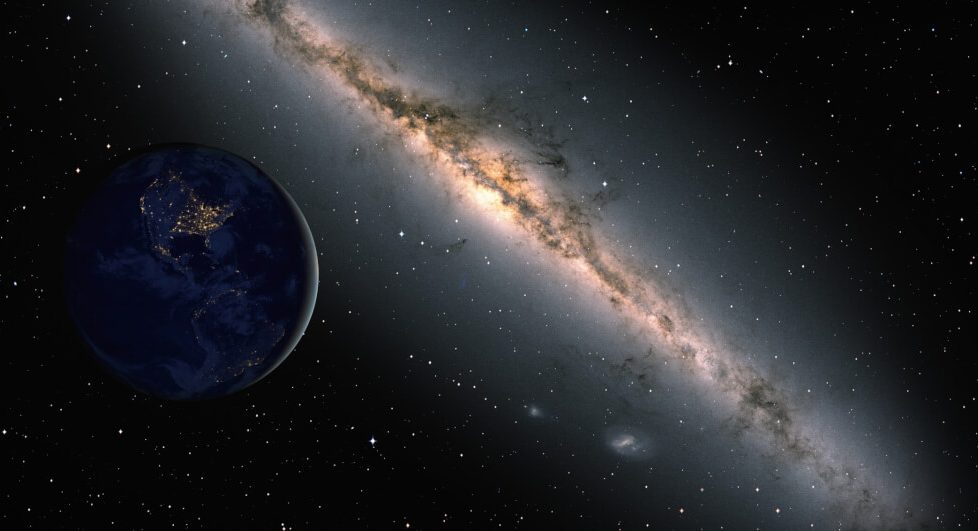Cosmic bombshell may change everything we know about the Milky Way galaxy

TROY, N.Y. — A stunning new study may upend everything we know about our cosmic home — the Milky Way galaxy. According to researchers from the Rensselaer Polytechnic Institute, our galaxy may have collided with another galaxy billions of years later than scientists previously thought. In fact, according to the study, the last time the Milky Way collided with another star cluster, the Earth had already formed. What a light show that must have been!
In their groundbreaking study, published in the Monthly Notices of the Royal Astronomical Society, the team of astronomers uncovered compelling evidence that the Milky Way galaxy experienced a massive merger event with a dwarf galaxy about six billion years later than believed. This discovery challenges the long-held theory that the last major merger, known as the Gaia-Sausage/Enceladus (GSE), occurred an astounding eight to 11 billion years ago. Instead, the new research suggests that the debris we see in the Milky Way’s stellar halo — the diffuse sphere of stars surrounding the galaxy’s disk — is the result of a collision that took place a mere one to two billion years ago, a cosmic blink of an eye in astronomical terms.
Researchers Heidi Jo Newberg and Tom Donlon focused on the “wrinkles” in our galaxy, which form when other galaxies smash into the Milky Way.
“We get wrinklier as we age, but our work reveals that the opposite is true for the Milky Way. It’s a sort of cosmic Benjamin Button, getting less wrinkly over time,” says Donlon, lead author of the new Gaia study, in a media release. “By looking at how these wrinkles dissipate over time, we can trace when the Milky Way experienced its last big crash – and it turns out this happened billions of years later than we thought.”
“For the wrinkles of stars to be as obvious as they appear in Gaia data, they must have joined us no less than three billion years ago – at least five billion years later than was previously thought,” adds Newberg. “New wrinkles of stars form each time the stars swing back and forth through the center of the Milky Way. If they’d joined us eight billion years ago, there would be so many wrinkles right next to each other that we would no longer see them as separate features.”
To unravel this mystery, the researchers employed a variety of cutting-edge techniques. First, they developed a semi-analytical model that relates the number of “caustics” (wrinkles or folds in the phase-space distribution of stars) to the time since a merger event. By analyzing data from the Gaia space observatory, the team identified several caustics in the local stellar halo and used their model to estimate the time of this collision.
However, the team didn’t stop there. They delved deeper into the dynamics of these caustics by comparing their observations to a state-of-the-art cosmological simulation of a Milky Way-like galaxy. This simulation, part of the FIRE-2 Latte suite, allowed them to track the evolution of a simulated dwarf galaxy as it crashed into the host galaxy at different times.
To make the comparison as accurate as possible, the researchers introduced a novel metric called “causticality,” which calculates the degree of unevenness in the phase-space distribution of stars. A high causticality value shows that the stars are not yet fully phase-mixed, suggesting a more recent collision.
The results of this analysis were nothing short of astonishing. The observed data from the Gaia observatory exhibited a high causticality value, revealing the presence of prominent, asymmetric caustics. When compared to the simulated data, the observed causticality matched the simulated merger debris best at a time roughly one to two billion years after the collision.
This finding stands in stark contrast to the widely accepted scenario of the GSE merger, which is thought to have occurred between eight and 11 billion years ago — long before Earth formed. The researchers found that in these ancient cosmic times, the simulated data showed a much lower causticality, pointing to a higher degree of phase-mixing than what is observed in the Milky Way’s stellar halo today.
While the study presents compelling evidence for a recent merger event, the researchers acknowledge several limitations and challenges. One key limitation is the reliance on a single cosmological simulation, which may not fully capture the complexities of the Milky Way’s formation history.
Additionally, the observed data is limited to the local stellar halo within five kiloparsecs (about 16,000 light-years) of the Sun. It is possible that the phase-space distribution of stars at larger distances could reveal a different picture.
Another challenge lies in the up-sampling process used to increase the resolution of the simulated data. While necessary for a meaningful comparison, this process could introduce biases or underestimate the true degree of phase-mixing.
Despite these limitations, the researchers argue that their findings are robust and consistent with other lines of galactic evidence. For instance, the observed stellar shells and substructures in the Milky Way’s halo are better explained by a recent collision rather than an ancient one, as older debris would have had more time to phase-mix and become less pronounced.
Moreover, the study provides a compelling alternative to the GSE scenario, which has faced increasing scrutiny in recent years. Some researchers have argued that the chemical and kinematic signatures attributed to the GSE could be explained by other processes, such as secular evolution or multiple smaller mergers.
If confirmed, this study’s findings could profoundly impact our understanding of the Milky Way’s formation history and the role of mergers in shaping galaxies. They could also have implications for our knowledge of galaxy evolution in general, as the timescales and dynamics of mergers are crucial for modeling and interpreting observations.
“Through this study, Doctors Newberg and Donlon have made a startling discovery about the history of the Milky Way galaxy,” says Curt Breneman, Ph.D., dean of Rensselaer’s School of Science.
